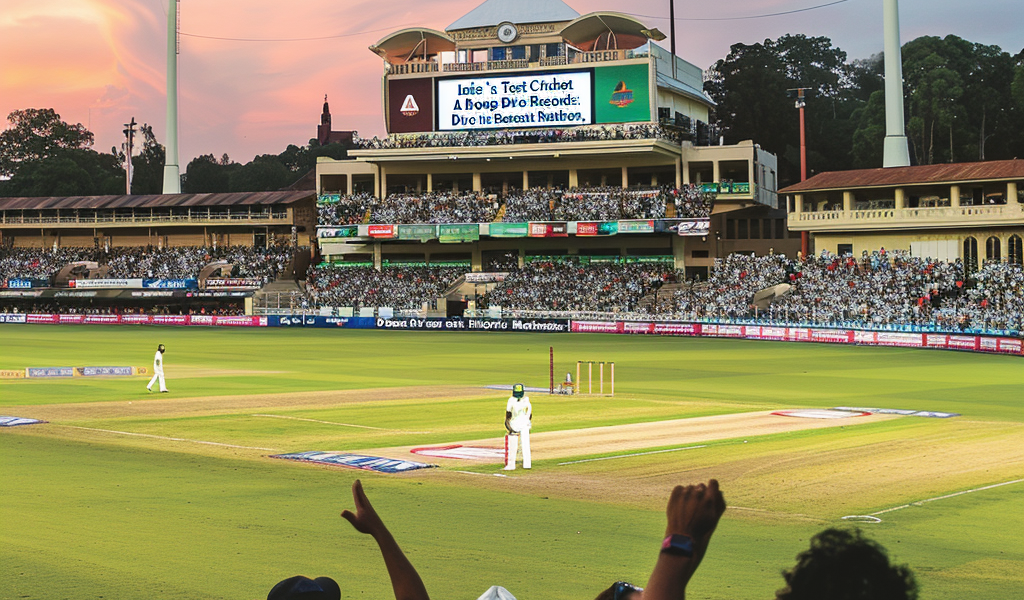India’s Test Cricket Records: A Deep Dive into Recent Historic Matches
The recent first Test match between India and New Zealand in Bengaluru has sparked a wave of interest and questions regarding cricket records, particularly surrounding the astonishing figures posted during the game. India’s dismal first innings total of 46 all out has raised queries about its place in the annals of Test cricket.
Many fans and analysts are curious if this is the lowest Test total recorded by a team playing at home. The answer to this intriguing question is that while India’s 46 all out is indeed a significant collapse, it is not the lowest home total in Test history. In fact, it ranks as the joint 18th lowest total in the history of Test cricket. England also faced a similar fate, scoring 46 against the West Indies in Port-of-Spain in 2004.
In an era where every run counts, the performance of a team in its first innings can set the tone for the entire match. In this case, India’s performance was particularly shocking given their recent form and expectations. The match took a dramatic turn as New Zealand capitalized on India’s collapse, taking the lead in the 44th over of the match, which prompts another question: Is this a record for the team batting second in a Test match?
New Zealand’s chase was swift, reaching their target in just 43.3 overs (261 balls). However, this is not the fastest known record for a team chasing down a total. The record for the quickest lead taken by a team batting second belongs to South Africa, who bowled New Zealand out for a mere 45 runs in just 30.4 overs (184 balls) during a Test match in Cape Town in January 2013. Additionally, India had previously taken the lead over South Africa in just 33 overs (198 deliveries) in January 2024 at Newlands.
Historically, records from early Test matches are often incomplete, making it challenging to determine the exact fastest lead taken. Notably, there are two instances where teams could have possibly taken the lead even quicker. In June 1896 at Lord’s, Australia was all out for 53 in just 22.3 five-ball overs (113 balls), and in February 1932 in Melbourne, South Africa was dismissed for 36 in 23.2 six-ball overs (140 balls).
Another interesting statistic revolves around how often the total of the team batting first has been surpassed by the second team’s openers, as New Zealand managed to do in Bengaluru. This occurrence marks the 28th time in Test history where the second innings openers have surpassed the first innings total. The highest total recorded in this context was 365 runs by West Indies in Georgetown in April 1972, where New Zealand’s openers Glenn Turner and Terry Jarvis formed an impressive opening partnership of 387 runs.
In a remarkable turnaround, India followed their dismal first innings with a staggering 462 runs in their second innings, achieving over ten times their initial score. This feat raises the question of whether any team has scored more than ten times their first-innings total before. The answer is yes, but only on one other occasion. India’s performance in Bengaluru marks only the second instance in Test history where a team has scored more than ten times their first innings total. The only larger comeback occurred at Edgbaston in 1924, where South Africa was bowled out for just 30 runs in their first innings but rebounded to score 390 runs in their second innings, a staggering 13 times their first total. Despite this remarkable recovery, South Africa lost the match by an innings, as England had scored 438 runs in their innings.
In first-class cricket, the largest difference recorded between first and second innings totals occurred during a County Championship match in 1922 at Edgbaston. In that match, Hampshire was bowled out for a mere 15 runs in their first innings. However, they made a remarkable comeback in their second innings, scoring 521 runs—nearly 34 times their initial total—and ultimately winning the match by 155 runs.
The dramatic events of the recent Test match in Bengaluru highlight the unpredictable nature of cricket, where fortunes can shift dramatically from one innings to the next. Fans and analysts will undoubtedly continue to dissect these records and performances, eager to see how they fit into the broader context of the sport’s history.
As cricket enthusiasts reflect on these records, it’s clear that the game continues to evolve, with each match providing new stories and statistics that contribute to the rich tapestry of cricket history. The thrill of the game lies not just in the runs scored or wickets taken, but in the narratives that emerge from each match, shaping the legacy of teams and players alike.





